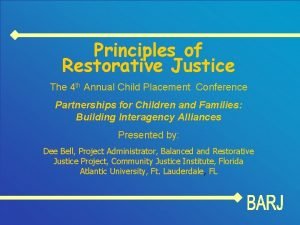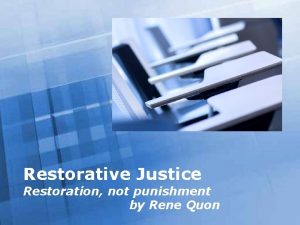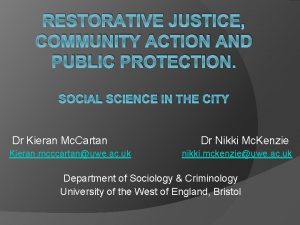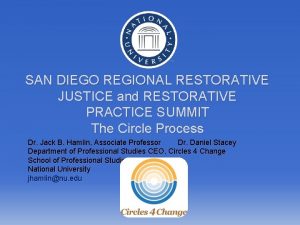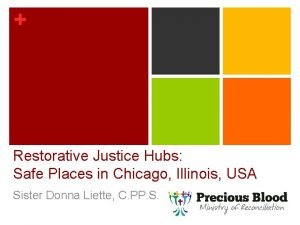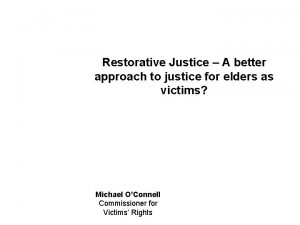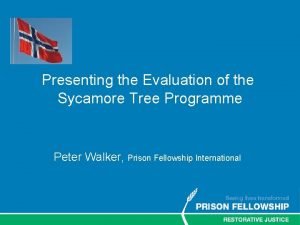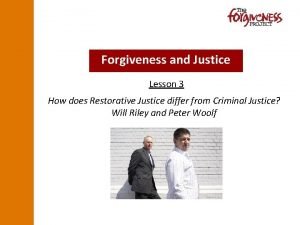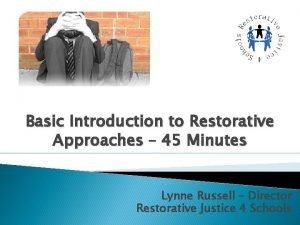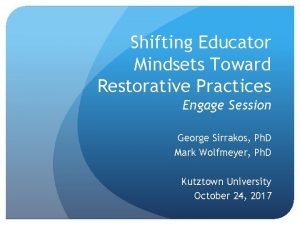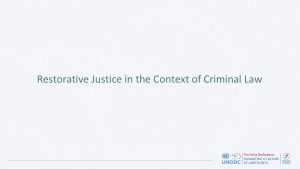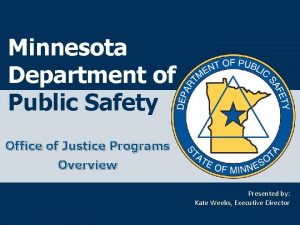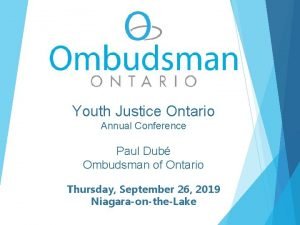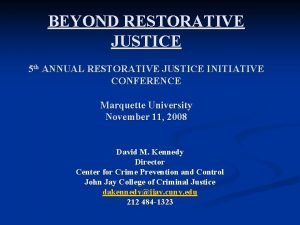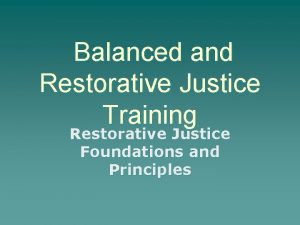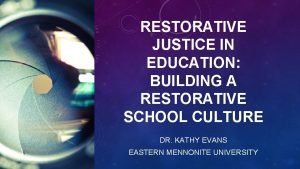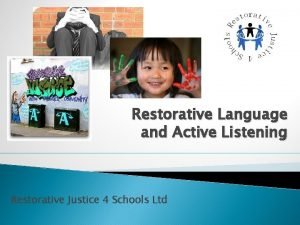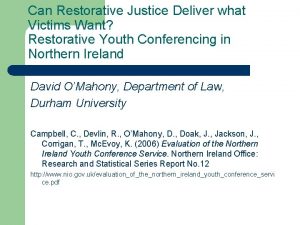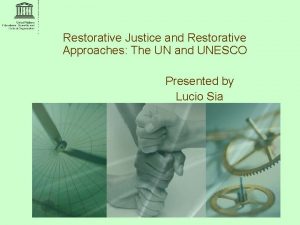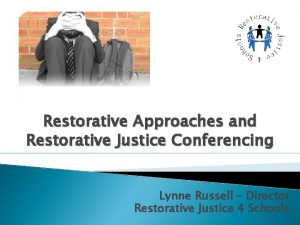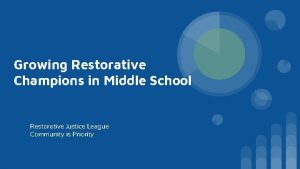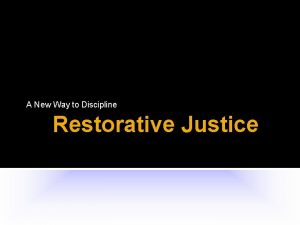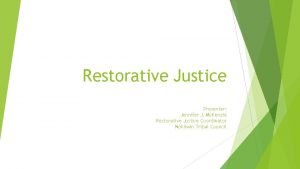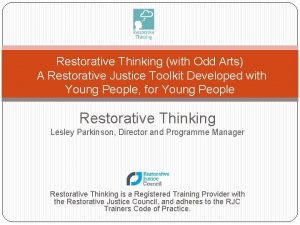Restorative Approach Examples Youth Justice Programs Adult Justice













- Slides: 13

Restorative Approach Examples • • • Youth Justice Programs Adult Justice Programs Restorative Approach in Schools Workplace Conflict Resolution Truth Commissions/ Peacebuilding Processes What do these examples share in common?

Restorative Approach is a Relational Approach • What is a relational approach? – Rooted in a relational idea of human beings and the world – Relevant for all levels of relationship (interpersonal, social, institutional, nation to nation) – Relationship can be healthy or unhealthy, harmful or positive – Approach is central to recognizing, understanding and addressing harmful relationships – “restored” relationships focused on conditions in relationship that enable social equality – equality of relationships which requires equal respect, concern/care and dignity

Umbrella Concept Restorative Approach Practices Strategies Policies/Procedures Processes

A Restorative Approach to Human Rights • Restorative approach is not simply a practice applied to reach a settlement and abandoned if agreement is not possible • It is an approach – a way of thinking about human rights and their protection • Restorative approach informs each stage of the process from commission to Board/Tribunal. • Including approach to work within commissions

Why Take The Restorative Approach to Human Rights? • Conceptual framework to understand human rights and discrimination • Fits with the understanding of human rights as public law (more than private dispute settlement) • Grounds an understanding of what is required to address discrimination (forward-focused/remedial, accommodation about relationship) • Offers processes capable of supporting sustainable accommodation • Supports the broader educational mandate of the Commission

Principles of a Restorative Approach (Principles for Practice) • Relationship focused – Contextual /Flexible • Subsidiarity • Inclusive • Participatory/Dialogical • Democratic/Deliberative • Comprehensive/holistic (not only incident focused, takes into account the contexts and causes) • Forward-focused (remedial)

A Restorative Approach to Human Rights • Aim: to developing understanding of what happened & its affects among the parties and determination of what is needed to move forward. • Understanding of what matters about what happened • Understanding not agreement • Identify issues that need further clarification or attention • NOT mediator or investigator • Facilitator an understanding amongst the parties

Responding Restoratively When Things Go Wrong • Challenges our learned assumptions about what is required when things go wrong • Criminal justice system looks backward in order to ascribe individual blame and punishment to “even the score” • BUT this is not the goal of Human Rights Protection

Responding Restoratively • Restorative approach is not focused on blame but on addressing the harm and ensuring it does not happen again • Establishes plans for the future that provide meaningful responses to support future behaviour and healthy relationships.

Responding Restoratively • The restorative approach looks back in order to understand: – what happened – who was affected/harmed – who was responsible • The looks forward to: – what needs to be done to address the harm and relate in a better way

Responding Restoratively • Seeks to understand the context and causes of a harm • Does not simply focus on the harm-doer and one harmed but asks who else was involved or affected (and who can affect the outcome) and brings them into the process • Reveals where individual harm is connected to broader or systemic issues

Putting the Principles into Practice Focuses attention on a number of process and practice issues: • Goal/Purpose of processes (role of meeting between parties and the agreement or “settlement”, role of board/tribunal chairs) • Who needs to be included in the process and why? • Approach within the process the role of “mediator” or commission staff

Benefits of A Restorative Approach • Better information – Relational truth • Better outcomes – legitimacy because inclusive/participatory/subsidiarity – more likely to be carried out cause it is the parties plan but also based on an understanding of the intentions of the plan • Broader effects – Beyond the “dispute” to address the “conflict” – Systemic Issues (integrated educational mandate) – Capacity building for parties into the future
 Principle of restorative justice
Principle of restorative justice Restorative justice ppt
Restorative justice ppt Social justice and community action
Social justice and community action San diego restorative justice
San diego restorative justice Restorative justice hubs chicago
Restorative justice hubs chicago Pros and cons of restorative justice
Pros and cons of restorative justice Sycamore tree restorative justice
Sycamore tree restorative justice Peter woolf and will riley
Peter woolf and will riley Restorative justice script
Restorative justice script What is restorative justice
What is restorative justice Principles of restorative justice
Principles of restorative justice Cpmcd full form
Cpmcd full form Office of justice programs mn
Office of justice programs mn Youth justice ontario
Youth justice ontario
